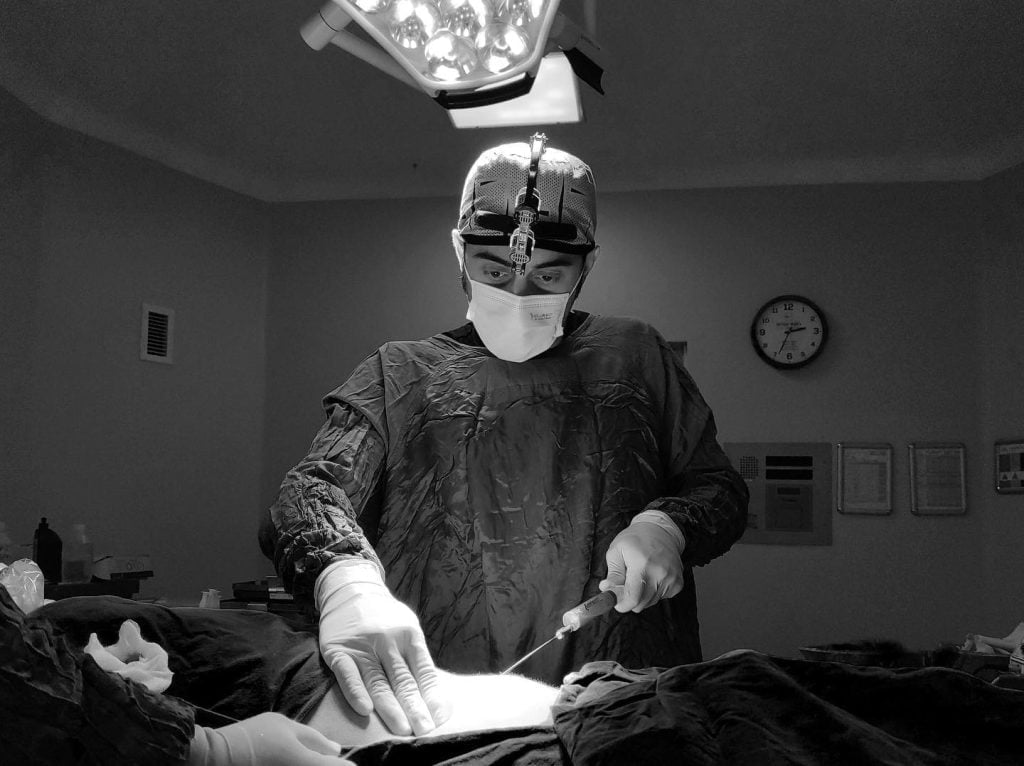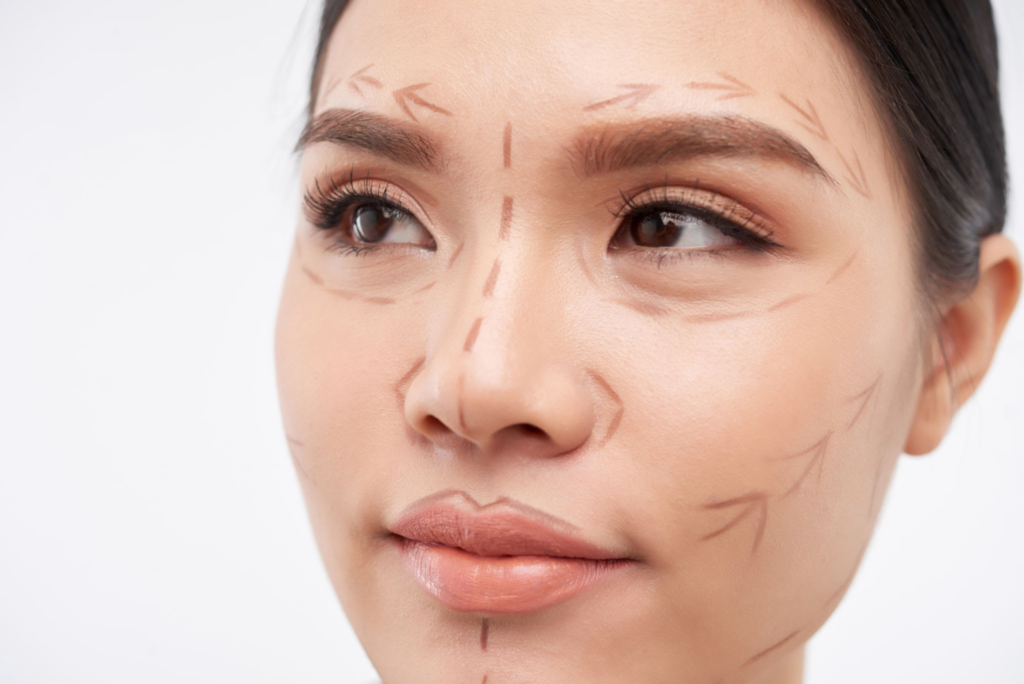Feminización Facial La cirugía de reducción del hueso orbital (FFS, por sus siglas en inglés) es un procedimiento transformador para muchas personas transgénero que buscan alinear su apariencia física con su identidad de género. Un aspecto fundamental de la FFS es la reducción del hueso orbital, que desempeña un papel importante en la consecución de una estructura facial más femenina. En este blog, analizaremos en profundidad las consideraciones, los impactos y los procesos que implica la reducción del hueso orbital, lo que proporcionará una comprensión integral de este procedimiento crucial.
Tabla de contenido
Cambios anatómicos clave en la reducción del hueso orbitario
Áreas objetivo para la reducción del hueso orbital
La reducción del hueso orbital se centra principalmente en el arco superciliar, que tiende a ser más pronunciado en los hombres. El procedimiento implica remodelar el hueso frontal y los bordes supraorbitales para crear un contorno más suave y femenino. Este cambio suaviza significativamente el aspecto general del rostro.
Técnicas utilizadas en la reducción del hueso orbitario
Los cirujanos emplean varios técnicas para la reducción del hueso orbital, incluyendo fresado, afeitado y osteotomíaLa elección de la técnica depende de la estructura ósea de cada persona y del resultado deseado. El fresado y el raspado son menos invasivos, mientras que la osteotomía implica cortar y reposicionar el hueso para lograr cambios más drásticos.
Impacto en la estética facial
Realzando las características femeninas
La reducción del hueso orbital mejora drásticamente los rasgos femeninos al reducir la prominencia del arco superciliar. Esta alteración ayuda a lograr una frente más suave y redondeada, característica del rostro femenino. El procedimiento también mejora la armonía y el equilibrio de los rasgos faciales, lo que contribuye a una apariencia general más femenina.
Beneficios psicológicos y sociales
Los beneficios psicológicos de la reducción del hueso orbital son profundos. mujeres transgénero Los pacientes manifiestan una mayor confianza y comodidad en su aspecto después de la cirugía. Este aumento de la autoestima tiene un impacto positivo en las interacciones sociales y la calidad de vida en general.
Riesgos y complicaciones
Posibles riesgos quirúrgicos
Al igual que con cualquier procedimiento quirúrgico, la reducción del hueso orbital conlleva riesgos potenciales, entre ellos, infecciones, sangrado y reacciones adversas a la anestesia. Los pacientes deben analizar estos riesgos con su médico. cirujano y comprender las medidas adoptadas para mitigarlos.
Complicaciones a largo plazo
Las complicaciones a largo plazo, aunque poco frecuentes, incluyen asimetría, daño a los nervios y problemas con la consolidación ósea. Las citas de seguimiento periódicas y el cumplimiento de las instrucciones de cuidados posoperatorios son esenciales para minimizar estos riesgos.
Determinación del grado de reducción
Evaluaciones preoperatorias
Los cirujanos realizan evaluaciones preoperatorias exhaustivas para determinar el grado de reducción ósea orbitaria necesaria. Esto incluye un análisis facial detallado, estudios de imágenes y conversaciones sobre los objetivos estéticos del paciente. Estas evaluaciones ayudan a crear un plan quirúrgico personalizado.
Equilibrar los objetivos estéticos y la seguridad
La experiencia del cirujano es fundamental para equilibrar los objetivos estéticos del paciente con las consideraciones de seguridad. Una reducción excesiva da lugar a una apariencia poco natural, mientras que una reducción insuficiente puede no lograr la feminización deseada. Un cirujano experto encuentra el equilibrio adecuado para garantizar resultados óptimos.
Evaluaciones y planificación preoperatorias
Análisis facial completo
Un análisis facial completo es el primer paso para planificar la reducción ósea orbitaria. Este análisis tiene en cuenta la estructura facial general del paciente, la calidad de la piel y la anatomía ósea subyacente. Ayuda a identificar las áreas específicas que necesitan modificación.
Estudios de imagen
Los estudios de imagen, como las tomografías computarizadas, brindan información detallada sobre la estructura ósea y ayudan a planificar el abordaje quirúrgico. Estos estudios son cruciales para comprender el grosor y la densidad de los huesos, que influyen en la elección de la técnica quirúrgica.
Colaboración entre paciente y cirujano
La comunicación eficaz entre el paciente y el cirujano es fundamental para obtener resultados satisfactorios. Los pacientes deben hablar abiertamente de sus expectativas e inquietudes, mientras que los cirujanos deben ofrecer información realista sobre lo que se puede lograr. Esta colaboración garantiza que ambas partes estén de acuerdo con los objetivos quirúrgicos.
Conclusión
La reducción del hueso orbitario es un componente fundamental de Cirugía de Feminización Facial, que ofrece importantes beneficios estéticos y psicológicos para las personas transgénero. Al comprender los cambios anatómicos clave, los riesgos potenciales y la importancia de las evaluaciones preoperatorias exhaustivas, los pacientes pueden tomar decisiones informadas sobre su cirugía. Con la experiencia de un cirujano experto, la reducción ósea orbitaria puede ayudar a lograr una apariencia facial más femenina y armoniosa, mejorando tanto la confianza como la calidad de vida.
Visita Perfil de Instagram del Dr. MFO ¡para ver transformaciones reales de pacientes! Eche un vistazo a los increíbles resultados obtenidos mediante el tratamiento facial. cirugía de feminización y otros procedimientos. El perfil muestra fotos de antes y después que resaltan Dr. OFMLa experiencia y la visión artística de en la creación de resultados hermosos y de apariencia natural.

¿Listo para dar el siguiente paso en su viaje? Planificar una consulta gratis con Dr. OFM hoy. Durante la consulta, puede discutir sus objetivos, hacer cualquier pregunta que pueda tener y aprender más sobre cómo Dr. OFM puede ayudarle a lograr el aspecto deseado. No dude en aprovechar esta oportunidad gratuita para explorar sus opciones y ver si Dr. OFM es el adecuado para usted.
Preguntas frecuentes sobre la reducción del hueso orbital en la cirugía de feminización facial
¿Qué áreas se tratan en la reducción ósea orbital?
La reducción del hueso orbital se centra principalmente en el arco superciliar, que suele ser más pronunciado en los hombres. El procedimiento remodela el hueso frontal y los bordes supraorbitales para crear un contorno más suave y femenino. Este cambio suaviza significativamente el aspecto general del rostro, lo que contribuye a un aspecto más femenino.
¿Qué técnicas se utilizan en la reducción ósea orbitaria?
Los cirujanos utilizan diversas técnicas para la reducción del hueso orbital, entre ellas el fresado, el raspado y la osteotomía. El fresado y el raspado son métodos menos invasivos que implican alisar la superficie del hueso, mientras que la osteotomía implica cortar y reposicionar el hueso para lograr cambios más drásticos. La elección de la técnica depende de la estructura ósea del individuo y del resultado deseado.
¿Cómo la reducción del hueso orbital mejora los rasgos femeninos?
La reducción del hueso orbital mejora los rasgos femeninos al reducir la prominencia del arco superciliar, lo que da como resultado una frente más suave y redondeada. Esta alteración mejora la armonía y el equilibrio de los rasgos faciales, lo que contribuye a una apariencia general más femenina. El procedimiento desempeña un papel crucial en la consecución de los objetivos estéticos deseados en la cirugía de feminización facial.
¿Cuáles son los posibles riesgos y complicaciones de la reducción del hueso orbitario?
Al igual que con cualquier procedimiento quirúrgico, la reducción ósea orbitaria conlleva riesgos potenciales, como infecciones, sangrado y reacciones adversas a la anestesia. Las complicaciones a largo plazo, aunque poco frecuentes, pueden incluir asimetría, daño a los nervios y problemas con la consolidación ósea. Es esencial que los pacientes hablen sobre estos riesgos con su cirujano y sigan las instrucciones de cuidados posoperatorios para minimizar las complicaciones.
¿Cómo determinan los cirujanos el grado de reducción ósea orbital necesaria?
Los cirujanos determinan el grado de reducción ósea orbitaria necesaria mediante evaluaciones preoperatorias exhaustivas. Esto incluye un análisis facial detallado, estudios de imágenes y conversaciones sobre los objetivos estéticos del paciente. Estas evaluaciones ayudan a crear un plan quirúrgico personalizado que equilibra los deseos del paciente con las consideraciones de seguridad, lo que garantiza resultados óptimos.








